Reviews
David Hockney at Tate Britain Is an Expectedly Splashy Survey
The exhibition ambitiously addresses the artist's entire career.
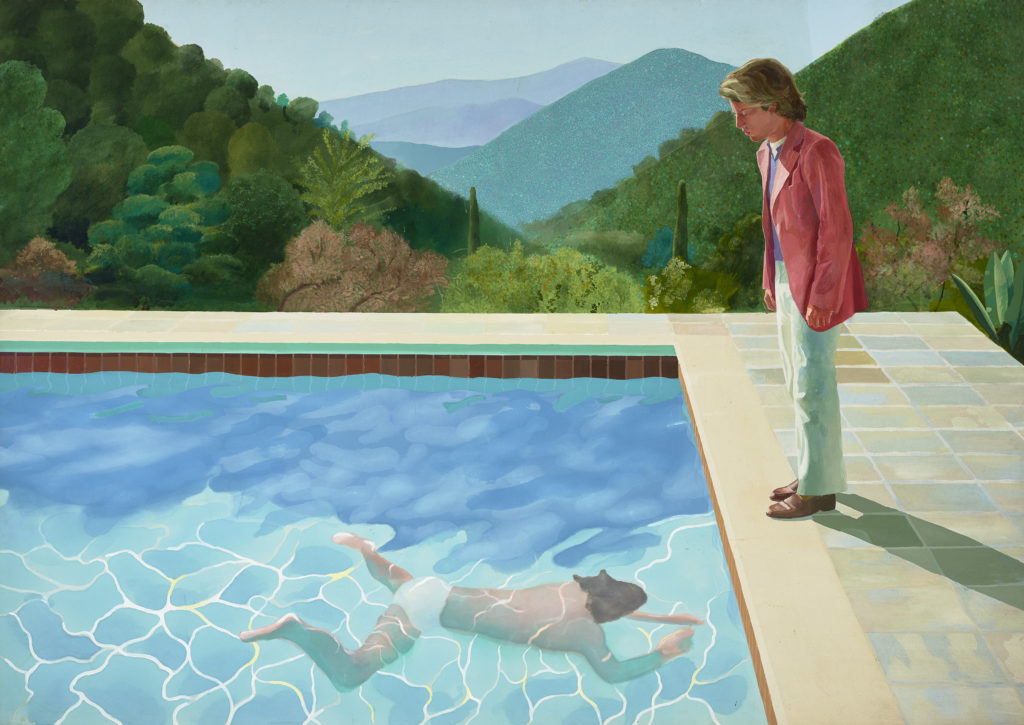
The exhibition ambitiously addresses the artist's entire career.

Caroline Elbaor

David Hockney’s hotly anticipated retrospective—which has already sold over 20,000 advance tickets, making it the fastest-selling exhibition in Tate history—opens to the public this Thursday, February 9 at the Tate Britain in London. The exhibition presents an overview of the English artist’s breadth of work, including painting, drawing, photography, and video.
“Why don’t you just paint the things you love?” Hockney was asked by a friend during his time studying at the Royal College of Art in London (RCA), from 1950-62. Described by Tate curator Chris Stephens as a “crucial” question in shaping Hockney’s oeuvre, the artist went on to do just that: paint images of his boyfriends, as well as the landscapes and portraits for which he is best known.
For “David Hockney,” the Tate Britain, in collaboration with the Centre Pompidou in Paris and New York’s Metropolitan Museum, has mounted a massive exhibition, laid out chronologically across 13 galleries. The issue here is not content (we are indeed presented with audience-hits like 1967’s A Bigger Splash and never-before-seen paintings created specifically for the occasion), but the way the exhibition is shaped like an introduction to David Hockney, as opposed to an in-depth survey.
“Hockney is an artist who has frequently changed his style and ways of work,” the press release tells us. It’s worth asking whether such styles and methods could have been explored by organizing the galleries thematically instead of chronologically.
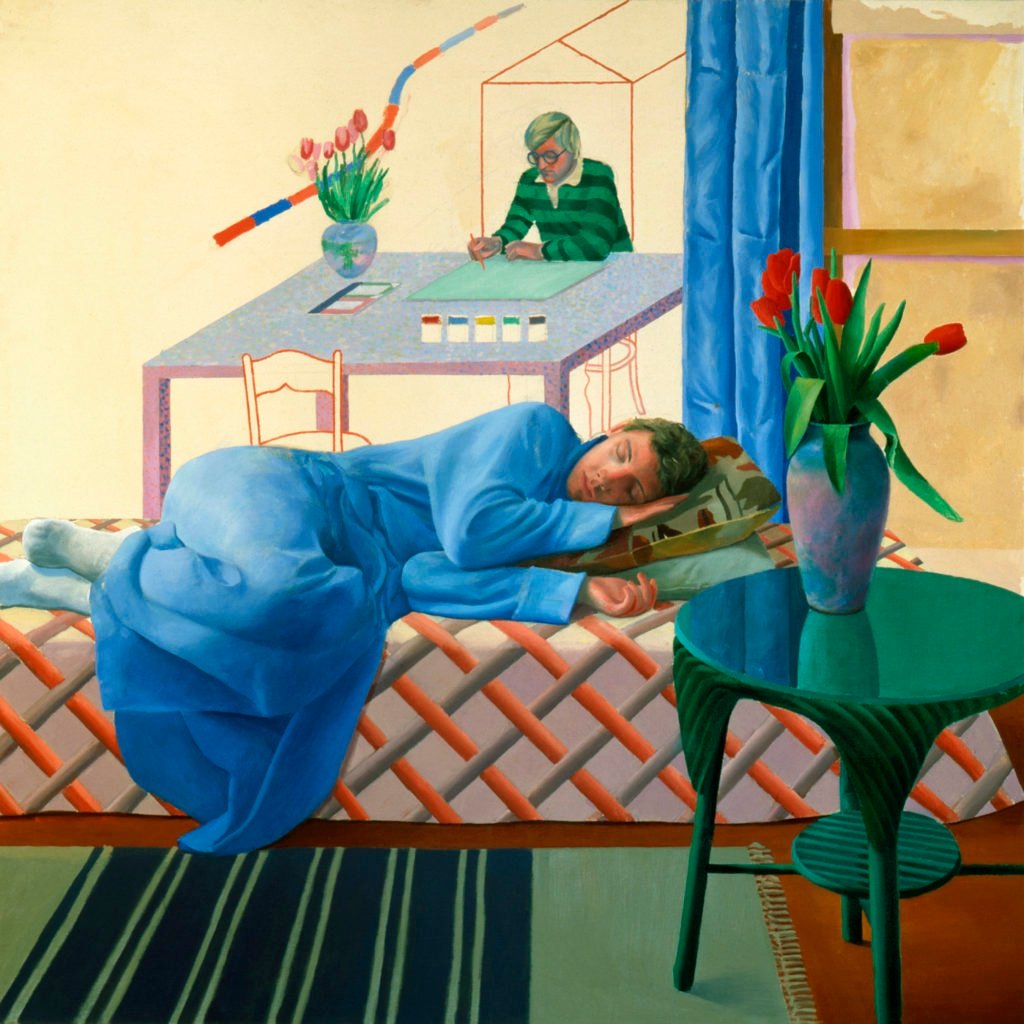
David Hockney, Model with Unfinished Self-Portrait (1977). ©DAVID HOCKNEY
Beginning with his work from the 1960s, the exhibition’s early rooms focus on Hockney’s dabbles in abstraction, which eventually led him to explore the critique of perspective and self-referentiality within his work. He was influenced by a 1960 Tate exhibition of Picasso he saw as a student at the RCA—an impression which led to the way in which Hockney rejected the single-lens camera view of painting by depicting multiple perspectives at once.
Play Within a Play (1963) is on view here, in which Hockney’s work with theater backdrops is made evident as well as his interest in vantage points. He depicts himself seemingly pressed against glass, but while standing on a stage against a setting that would allow for movement.
These pictorial “illusions” are often referenced throughout the exhibition: of Play Within a Play, Stephens writes in his accompanying catalogue essay, “It is an image that plays with the viewer’s perception of the object in front of them and with the conventions of illusionism in painting.”
The Love paintings of 1960 and ‘61 demonstrate Hockney’s initial foray into abstraction—and influence from Jean DuBuffet in particular—which he took and then “turned into something queer,” according to Stephens. We Two Boys Together Clinging (1961) is perhaps another example of this; the title is in itself an admission of his love for other men, and shows two abstract figures seemingly holding one another in a nondescript setting, with text, a heart, and gestural marks floating in the background.
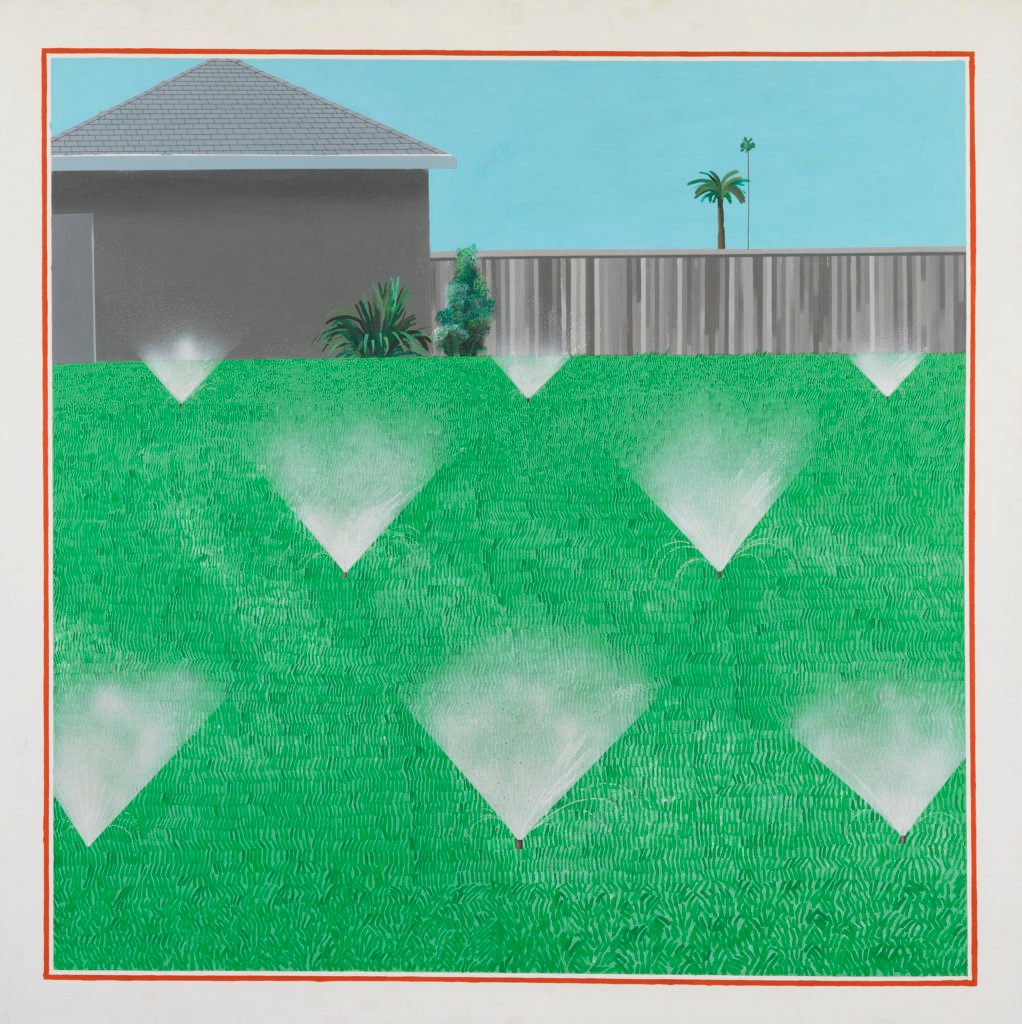
David Hockney, A Lawn Being Sprinkled (1967). ©David Hockney, Courtesy Richard Schmidt
The audience is then gently guided into the next gallery, somewhat bizarrely titled “Paintings with People In,” to be didactically told about the period in which Hockney’s interest in figurative painting fully bloomed. Here is where we see human forms as well as representations of the American West—particularly California—he came to so adore. This leads, of course, to where the artist’s arguably most-recognizable paintings are on view. One of his most iconic, A Bigger Splash (1967), is here, as well as Sunbather (1966), and A Lawn Being Sprinkled (1967).
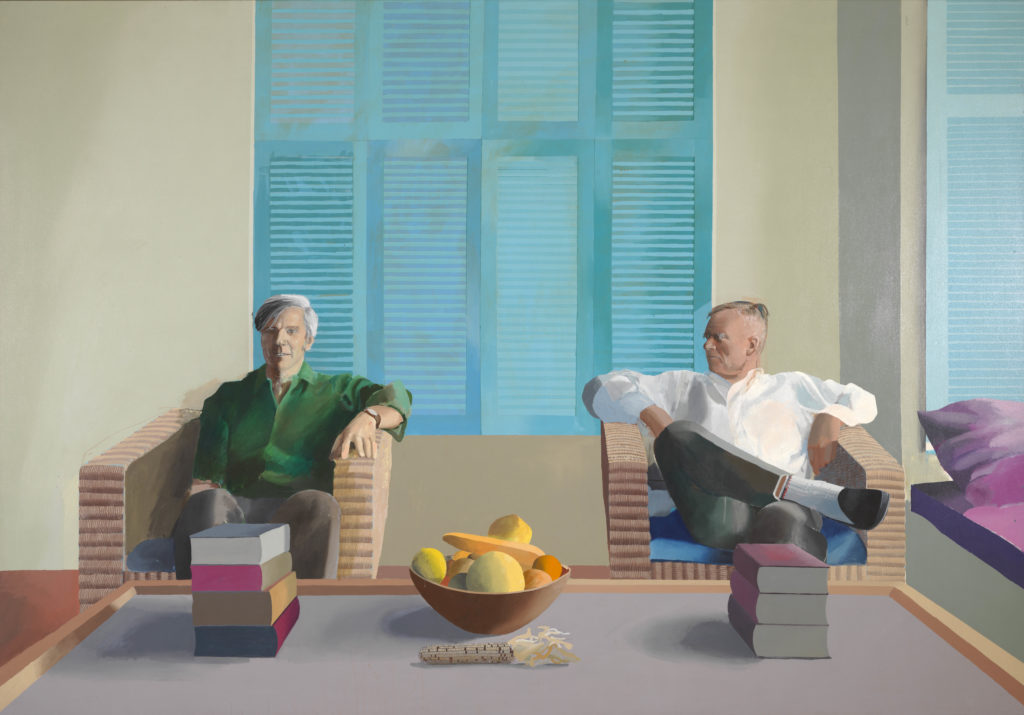
David Hockney, Christopher Isherwood and Don Bachardy, (1968). Courtesy Tate.
Also on view is Hockney’s series of double portraits, reunited in the exhibition for the first time in 20 years. Of particular note is the display of Christopher Isherwood and Don Bachardy (1968), the first created in the series, and of particular relevance to Hockney for its portrayal of one of Hollywood’s first openly gay couples. These double portraits also again refer to Hockney’s focus on perspective, where the setting was larger than what a single-lens camera could catch, shifting space to accommodate the dynamic world the eye sees.
Galleries filled with works on paper and photographic pieces bridge the exhibition’s exploration of the California-inspired ‘70s paintings and the landscapes of the late ‘90s and early 2000s. A space is dedicated to Hockney’s 2010-11 video work, The Four Seasons, Woldgate Woods (Spring 2011, Summer 2010, Autumn 2010, Winter 2010) before comparing the artist’s 2013-16 landscapes between Yorkshire, England and Hollywood, California, between which Hockney splits his time.
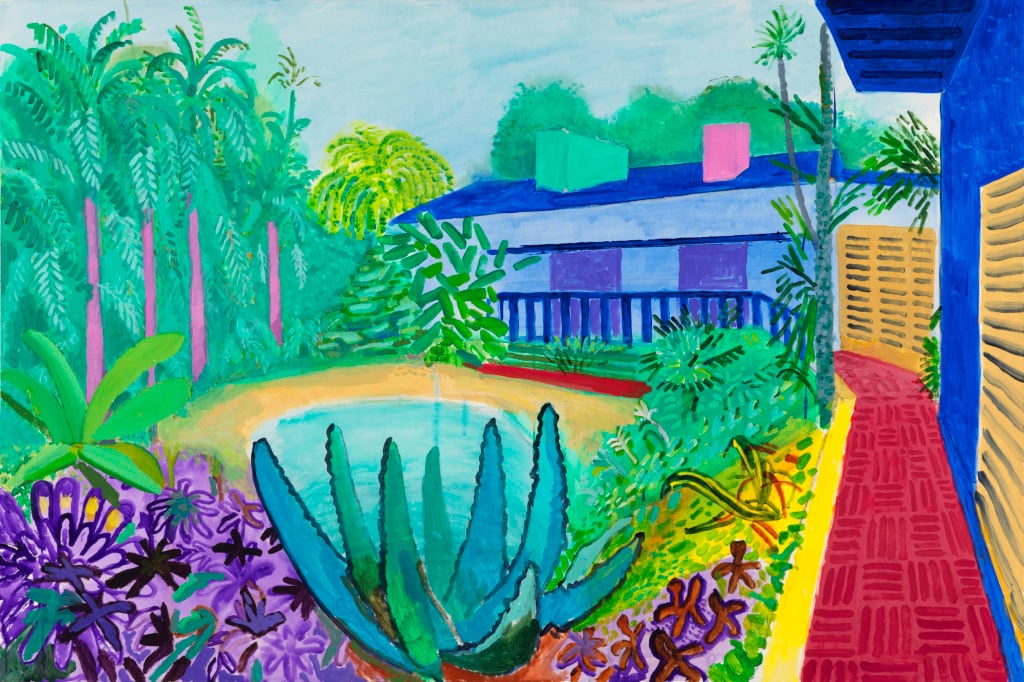
David Hockney, Garden, (2015). ©David Hockney, Courtesy Richard Schmidt
Two new paintings, created in 2016 specifically for the exhibition, are unveiled alongside the show’s opening: Garden #3 and Two Pots on the Terrace. We end, sensibly, with his iPhone and iPad paintings.
The retrospective is nothing if not replete with works—both enabling and hindering it. In choosing to frame the exhibition as a chronological survey, the success of “David Hockney” hinges on its ability to show all subject matter, leaving no thread in the artist’s work the true ability to shine. The structure’s time-heavy emphasis ultimately leaves the show feeling undercooked: surely there is another mode in which to explore the work of the man who is arguably Britain’s most famous living painter.
David Hockney is on view at Tate Britain, London from February 9 – May 29, 2017